Reviving Web Games: From Flash Nostalgia to VIVERSE 3D Worlds
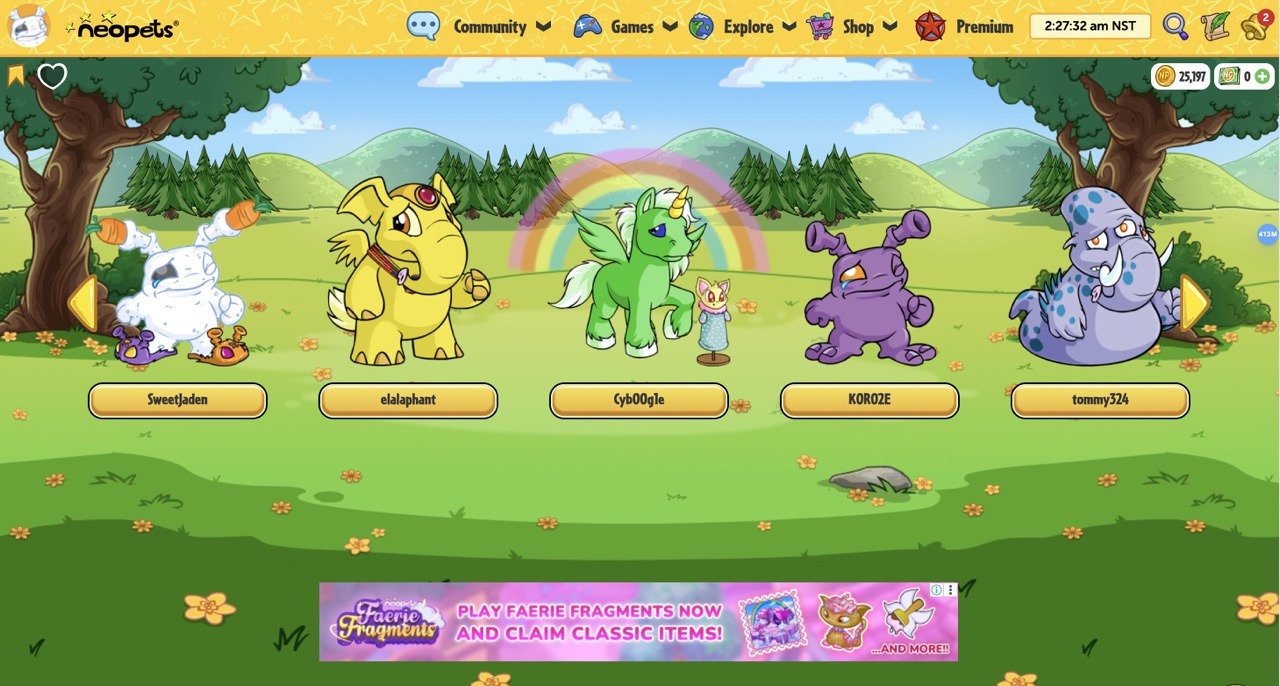
Games
5-minute read
If you were born in the '90s, you probably remember the days when you could just open a webpage and play mini-games. Neopets, Miniclip, Newgrounds... all you needed was a link, no installation required, and no device spec requirements. Hit Enter, and a whole new world awaited, often featuring multiplayer elements. Even a basic home computer could keep us entertained for countless afternoons.
Sure, we were limited by dial-up speeds, listening to the endless beeping of a busy phone line while waiting for images to load, but who cared back then?
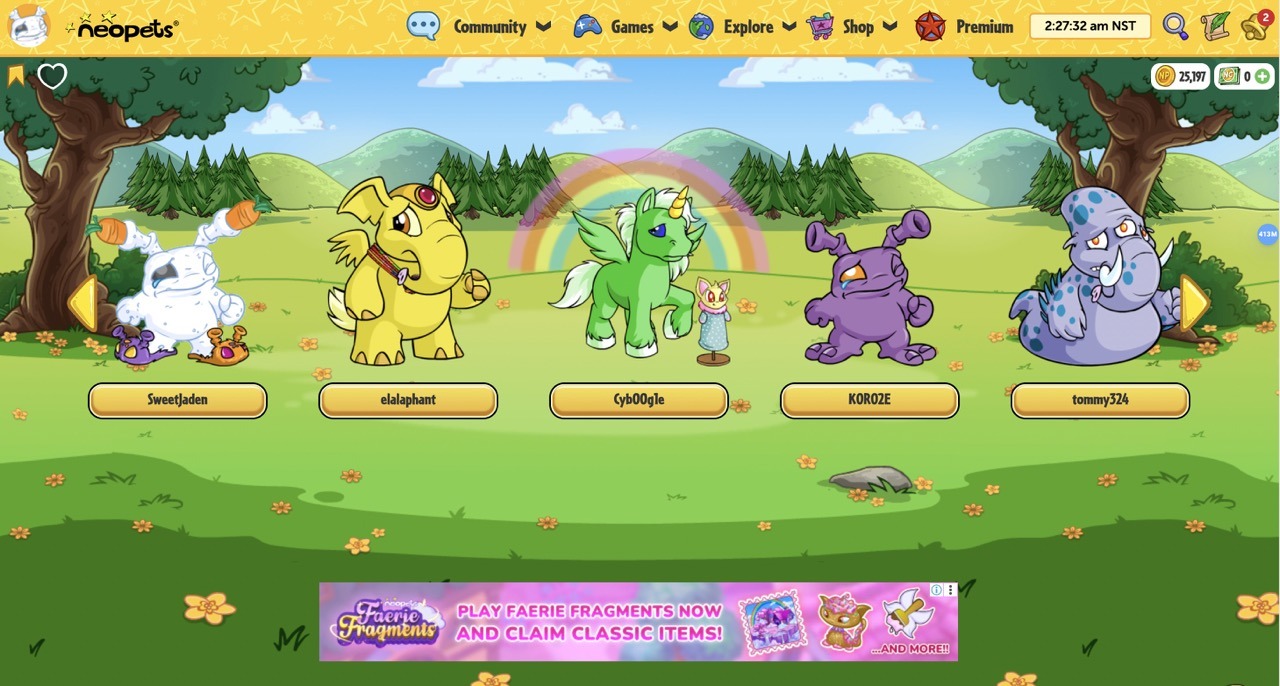
Fun fact: Neopets is still around.
From Flash to HTML5: The Golden Era and Limitations of Web Games
Back then, Flash was the backbone of web interactivity, powering animations, chatrooms, and the mini-games we grew up with. It delivered rich visuals and real-time interaction, but as security issues arose and cross-platform needs increased, major platforms like Apple stopped supporting it, leading to Flash's gradual phase-out.
HTML5 took over, requiring no additional plugins and supported directly by browsers, promising a "no-download, cross-platform" future for mobile phones, tablets, and computers. Developers tried to use HTML5 to create a new generation of web games, continuing the spirit of instant play without installation, and even venturing into 3D worlds.
Games like the multiplayer cell-eating game Agar.io and the endless cookie generator Cookie Clicker sparked a wave of simple yet addictive casual gaming, especially with lightweight multiplayer and idle clicker mechanics that were popular at the time.
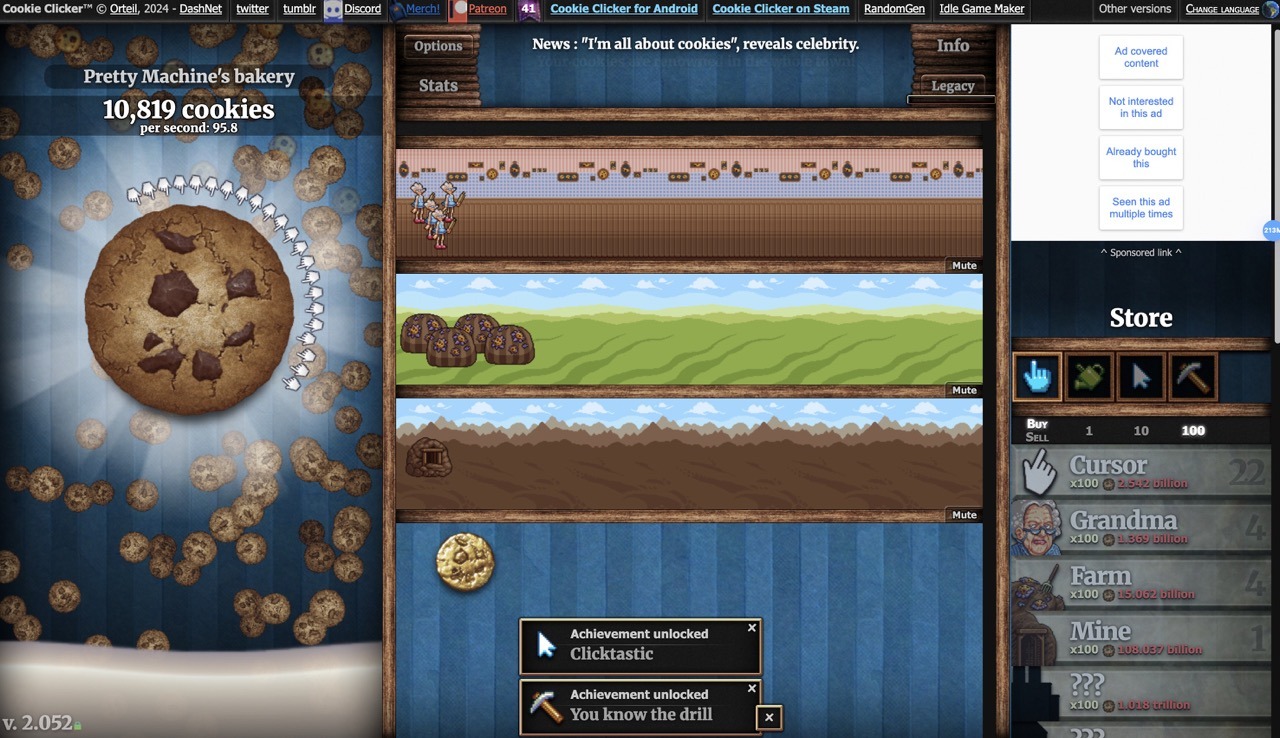
I was hooked on Cookie Clicker, staying up late to bake cookies.
However, the mobile gaming market quickly rose with native app games like Angry Birds and Candy Crush, which surpassed HTML5 in graphics and smoothness, leveraging touch controls and push notifications for anytime, anywhere play. While HTML5 technically succeeded Flash, it couldn't overcome performance barriers to bring web games into the 3D or large-scale interactive era.
Today, as games and virtual worlds strive for high realism, that simple joy seems distant. Forget AAA titles; even familiar virtual world platforms require app downloads. If you want to experience them on mobile, PC, or VR, you must download on each device and update frequently. These platforms offer richer interactions, finer graphics, and more complete community experiences but also raise the participation bar.
HTC's VIVERSE Worlds has brought back that familiar feeling—no downloads, no installations. Wherever you are, on any device, just open a browser, click a link, and step into a 3D world. This time around, we're not just players; we can be creators, easily building our virtual spaces and inviting others to explore.
VIVERSE Delivers 3D Experiences on the Web?
Web-based 3D experiences have struggled to go mainstream. After Flash's exit, HTML5 took over, promising "no-download, cross-platform" experiences, but technical limitations hindered rich interactions. Complex games or experiences faced delays, slow loading, and compromised graphics. Web 3D remained a concept waiting for the right conditions for widespread use.
As foundational technologies, creation tools, and sharing methods matured, Web 3D has become practical. Borrowing AI's three pillars—computing power, data, and algorithms—Web 3D now stands on three key elements:
1. Performance Boosts to Power 3D Worlds
WebGPU, a new web graphics technology, has been gaining traction. In 2023, W3C released a stable draft standard, succeeding WebGL to fully utilize modern GPUs (like those in game consoles or high-end phones).
With WebGPU, web pages can use the same level of technology as games or professional 3D software (like Vulkan, Direct3D 12, Metal), offering smoother visuals, more details, and less device strain. It's like equipping browsers with a game-level graphics card driver, enabling previously impossible web feats to run smoothly and beautifully.
However, hardware support alone isn't enough. VIVERSE's Polygon Streaming technology is crucial for running large 3D scenes smoothly. It breaks down massive 3D models into smaller pieces, loading only what's needed for the user's current view, allowing for seamless viewing and loading without full space preloading. Effects once limited to high-end computers are now accessible on regular phones and tablets.
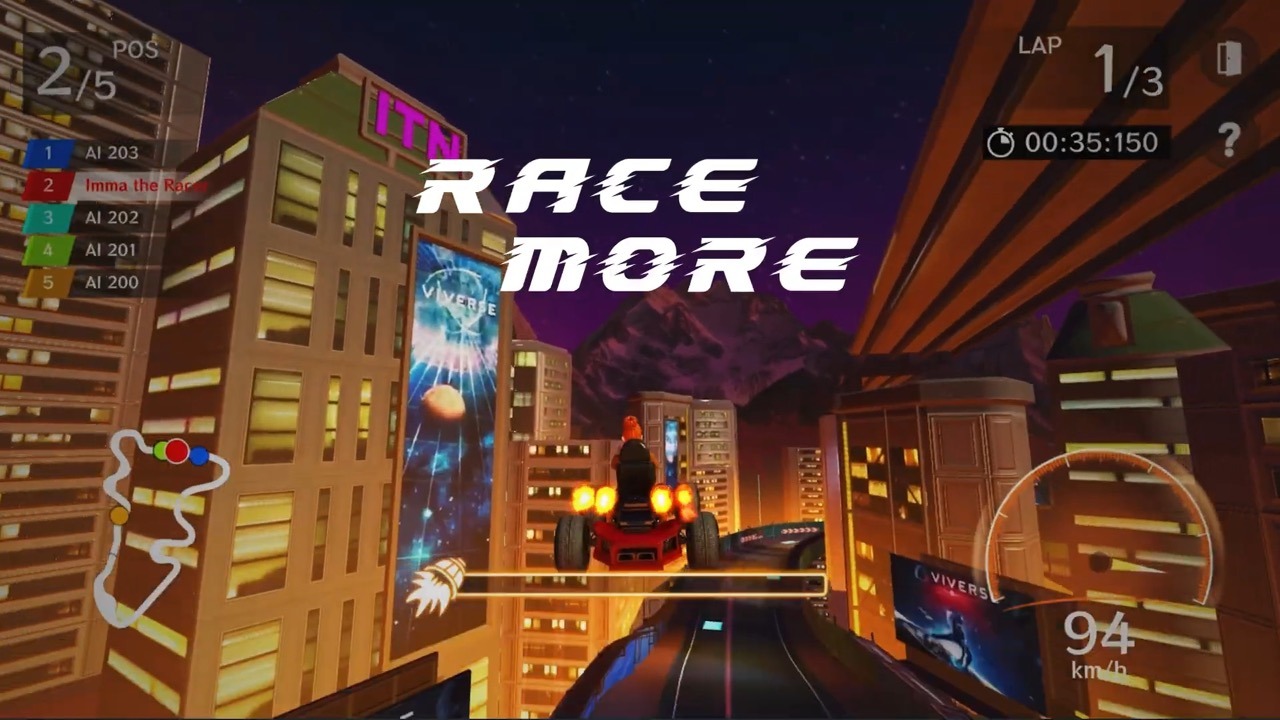
You can even play racing games in VIVERSE worlds!
2. Open Support for Rich and Easy Content Creation
No matter how good a platform is, it needs content to keep users engaged.
VIVERSE Worlds supports various popular 3D engines and creation tools, allowing creators of different experiences to publish works without redoing them for different platforms. If you're a regular user, you can use VIVERSE Create to quickly build your 3D space on the web with drag-and-drop editing and templates, no coding needed. You can use built-in Sketchfab assets, images, videos, and external links to create interactive scenes.
If you're used to professional tools, VIVERSE Worlds offers full support. Open-source 3D engines like PlayCanvas, WebXR-optimized Wonderland Engine, and even Unity for Web can publish 3D experiences directly to the platform, avoiding rework and format conversion hassles.
3. Publishing and Promotion to Get Your Work Seen
For 3D spaces to become widespread, they need to be seen and shared, not just well-made.
VIVERSE increases exposure through themed curation and creator collaborations, offering themed areas and event challenges to give outstanding works exposure. It also features a points reward system to encourage exploration, ensuring content isn't just published but continues to flow on the platform, creating an organic ecosystem that brings Web 3D into more people's daily lives.
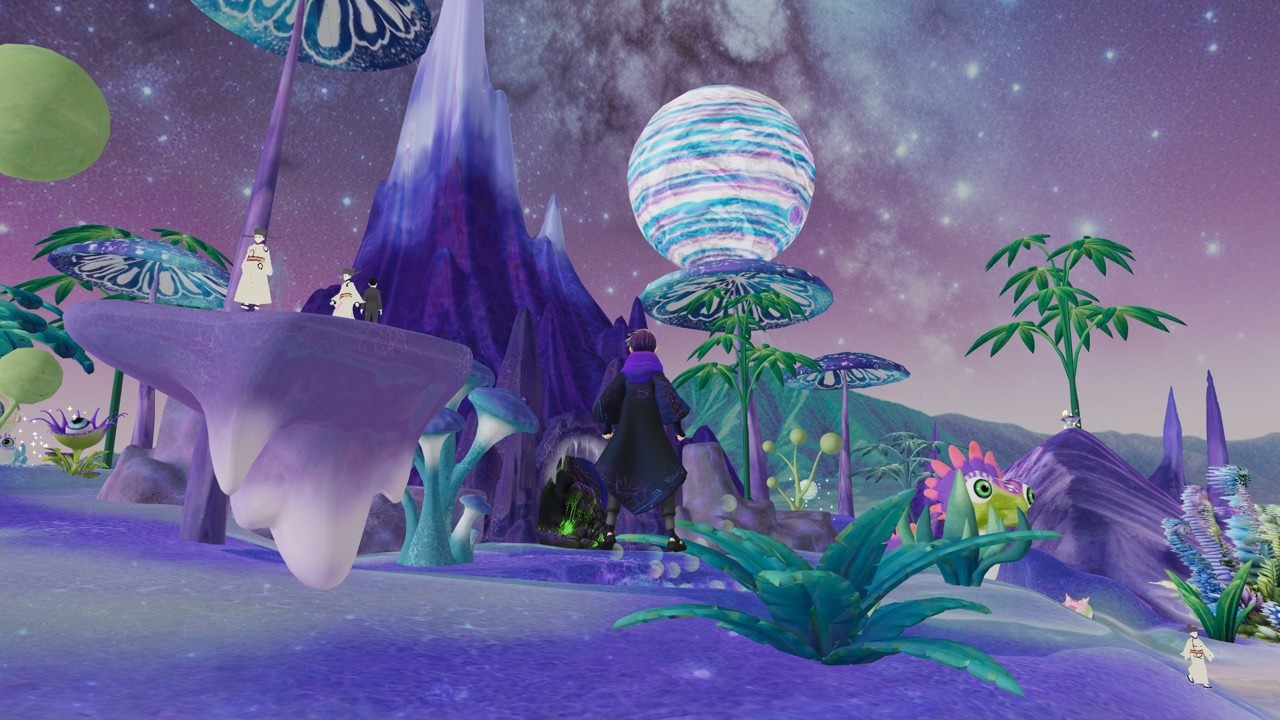
Alien EYEland world created by Willowmoon Art on VIVERSE.
What Possibilities Does VIVERSE Worlds Open Up When Sharing 3D Content Becomes Easy?
VIVERSE Worlds isn't about building a massive virtual kingdom or branding itself as a digital prototype of future society. It aims to solve the reality that 3D content remains inaccessible due to high barriers. For a long time, 3D experiences were seen as complex, professional-exclusive, and hard to share, accessible only to specific industries and technical backgrounds.
As we enter the AI era and many barriers loosen due to open standards, 3D creation and experiences will become simpler and more widespread. In VIVERSE Worlds, 3D environments aren't just places to show off technology. They will become a part of our daily lives, like sharing videos on YouTube or images on Instagram.

In addition to professional creators, VIVERSE also features Worlds by regular users and fans.
Whether it's an exhibition, a product, a travel adventure, or an online teaching space, it can be presented in 3D on the web, accessible across devices in real-time. For brands, this can extend new product experiences; for creators, it's an upgrade in expression; for regular users, it's a new way to share daily life and socialize, as naturally as posting photos or videos.
Rather than emphasizing which labels or concepts it falls under, VIVERSE Worlds is simply a continuation of the spirit of web games but in a three-dimensional space. The platforms may change and the visuals may be upgraded, but the need to share content and forge connections via a URL across devices has never disappeared. Now that the technology is in place and the conditions are aligned, it’s up to us to create new exciting Worlds.

